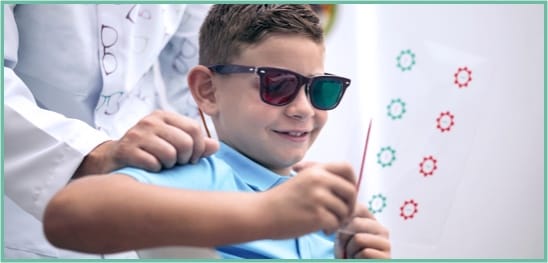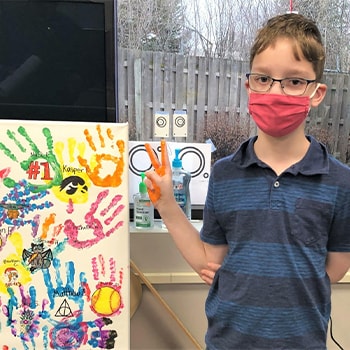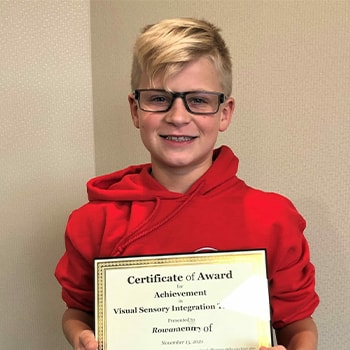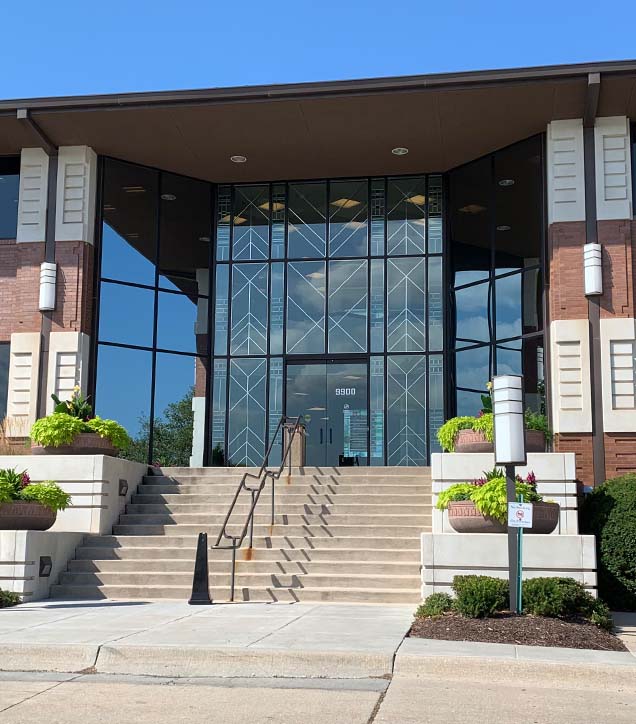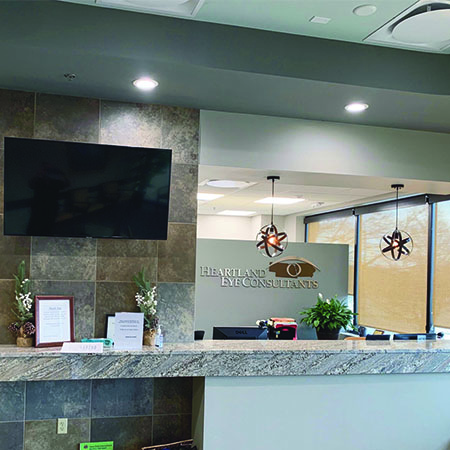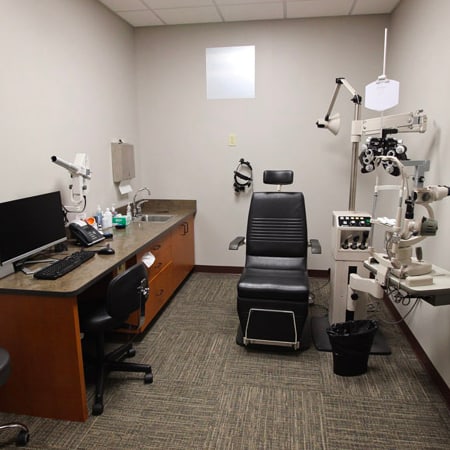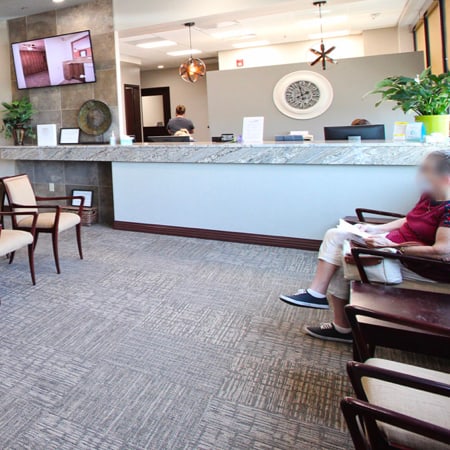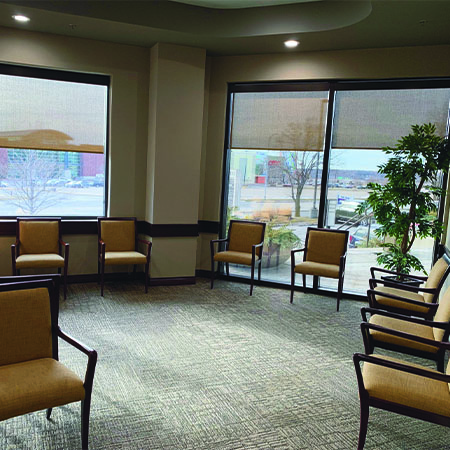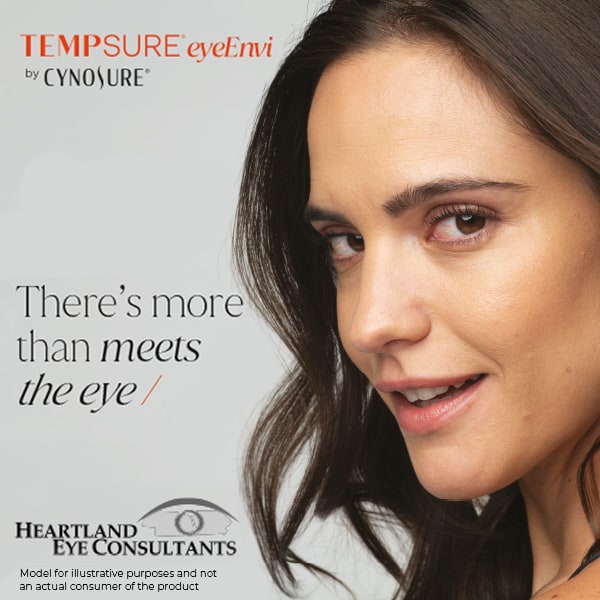Visual memory is the ability to recall and retain information that we see, enabling us to recognize objects, navigate spaces, and process visual details effectively. This critical cognitive skill plays a vital role in our lives, influencing how we learn, interact with the world, and perform everyday tasks.
For those looking to improve their visual memory, the first and most crucial step is to schedule an eye exam, and then explore vision therapy options.
Defining Visual Memory
Visual memory refers to the brain’s ability to store, process, and recall visual information. It is divided into two distinct types:
- Short-term visual memory: This involves briefly holding visual information, such as remembering a phone number you’ve just seen or recalling a location on a map.
- Long-term visual memory: This involves storing visual details for extended periods, such as recognizing the face of a childhood friend or recalling the layout of a familiar neighborhood.
These two types of memory work together seamlessly to help us navigate the world. For instance, when learning to read, short-term visual memory allows you to recognize individual letters, while long-term visual memory helps you remember the appearance of words over time.
How Visual Memory Works
Visual memory is powered by a sophisticated interaction between the eyes and the brain. When you see something, your eyes capture the image and send it to the visual cortex, the part of the brain responsible for processing visual stimuli. The brain then breaks down the image into smaller details, such as shapes, colors, patterns, and spatial relationships, a process known as encoding.
After encoding, the information is sent to the hippocampus and other memory-related areas of the brain. Here, it is categorized and either stored for short-term use or retained for long-term retrieval. This process ensures that visual information is readily available whenever it is needed, whether it’s recognizing a face in a crowd or navigating to a familiar location.
The brain’s ability to encode and retrieve visual details is influenced by a variety of factors, including age, overall health, and the presence of any neurological conditions. Weaknesses in visual memory may require targeted interventions to improve performance.
Why Is Visual Memory Important?
Visual memory is essential for a wide range of activities and abilities, making it a cornerstone of daily life. Here are just a few ways in which it plays a crucial role:
- Academic success: Students rely on visual memory to recognize letters, numbers, and words.
- Navigation and spatial awareness: Visual memory helps us make sense of our surroundings and find our way.
- Social interactions: Recognizing faces, interpreting body language, and recalling past experiences with individuals are all tasks that depend on strong visual memory.
- Everyday problem-solving: Visual memory enables us to recall instructions, patterns, and sequences needed to complete tasks effectively.
- Workplace productivity: Many jobs require employees to process and remember visual information, such as charts, diagrams, or layouts.

Signs of Weak Visual Memory
Weaknesses in visual memory can manifest in different ways, and recognizing the signs is the first step toward finding a solution. Common symptoms of weak visual memory include:
- Difficulty recalling visual details, such as the contents of a book or presentation
- Challenges recognizing familiar faces or objects
- Trouble following multi-step instructions, especially those with a visual component
- Poor reading comprehension, particularly in remembering what has just been read
- Difficulty copying written information, such as notes from a whiteboard
- Problems with spatial reasoning, such as assembling puzzles or following maps
These challenges can impact academic performance, work productivity, and overall quality of life. If you notice any of these signs in yourself or a loved one, a comprehensive evaluation may be beneficial.
Vision Therapy for Visual Memory
Vision therapy is a customized program of exercises and activities designed to improve visual skills, including the brain’s ability to process and recall visual information.
Key components of vision therapy for visual memory include:
- Sequential memory training: These exercises focus on improving the ability to recall visual sequences, such as numbers, letters, or objects presented in a specific order.
- Pattern recognition: Activities designed to enhance the ability to identify and remember patterns, such as matching similar images or completing visual puzzles.
- Visualization exercises: Encouraging patients to create mental images of what they see and recall those images later to reinforce memory.
These exercises are tailored to each patient’s specific needs, ensuring the best possible outcomes.
Who Can Benefit From Visual Memory Support?
Visual memory training can benefit individuals of all ages and backgrounds. Common groups who may benefit include:
School-Aged Children
Children struggling with reading, math, or other academic subjects often have underlying weaknesses in visual memory that make it difficult for them to recognize and remember letters, numbers, and patterns.
These challenges can lead to frustration in the classroom and hinder their overall academic performance. Vision therapy provides targeted support to help students strengthen their visual memory, improving their ability to process and retain information more effectively.
Adults Recovering from Brain Injuries
Traumatic brain injuries, such as concussions, strokes, or other neurological events, can significantly impair visual memory and the brain’s ability to process visual information. Adults recovering from these injuries may find it difficult to complete everyday tasks, such as remembering directions, recognizing faces, or following instructions.
Vision therapy can help re-establish neural connections, aiding in the recovery of lost visual memory skills and improving overall cognitive function.
Individuals with Attention Disorders
People with attention deficit disorder (ADD) or attention deficit hyperactivity disorder (ADHD) often face challenges with focusing and processing visual information. Strengthening visual memory can improve their ability to retain and recall visual details, aiding in better learning, organization, and task completion.
Tips for Supporting Visual Memory at Home
In addition to professional therapy, there are several ways to support visual memory development at home:
- Play memory games: Card-matching games, puzzles, or apps that focus on visual recall can be both fun and effective.
- Encourage drawing: Sketching or drawing from memory can strengthen recall skills and improve spatial awareness.
- Practice visualization: Ask children to describe what they just saw in detail or visualize a scene they’ve recently visited.
- Use mnemonics: Create vivid mental associations between visual details and familiar concepts to make information easier to remember.
- Limit distractions: Provide a quiet, focused environment where visual information can be absorbed without competing stimuli.
These strategies can complement formal therapy and help reinforce visual memory skills over time.
Heartland Eye Consultants: Your Partner in Visual Health
Visual memory is a foundational skill that affects how we learn, navigate, and interact with the world around us. Weak visual memory can pose challenges, but with the right interventions, those challenges can be overcome. At Heartland Eye Consultants, we are committed to helping our patients build strong visual skills and improve their quality of life. If you or a loved one is experiencing difficulties with visual memory, schedule an appointment with us today. Let our team of caring and knowledgeable professionals guide you toward a brighter, clearer future.









